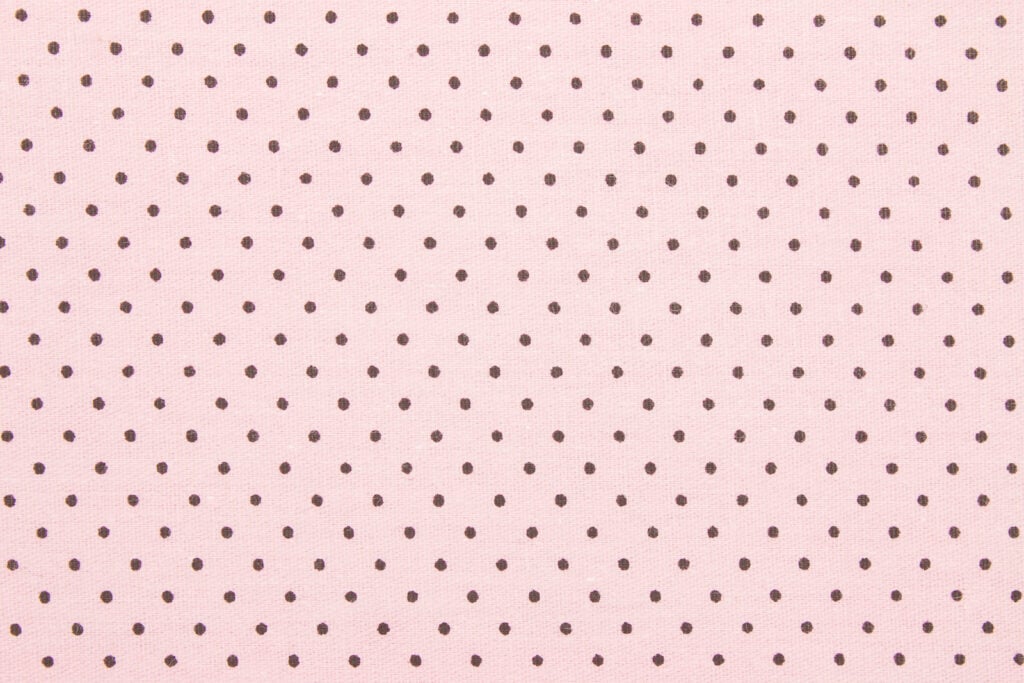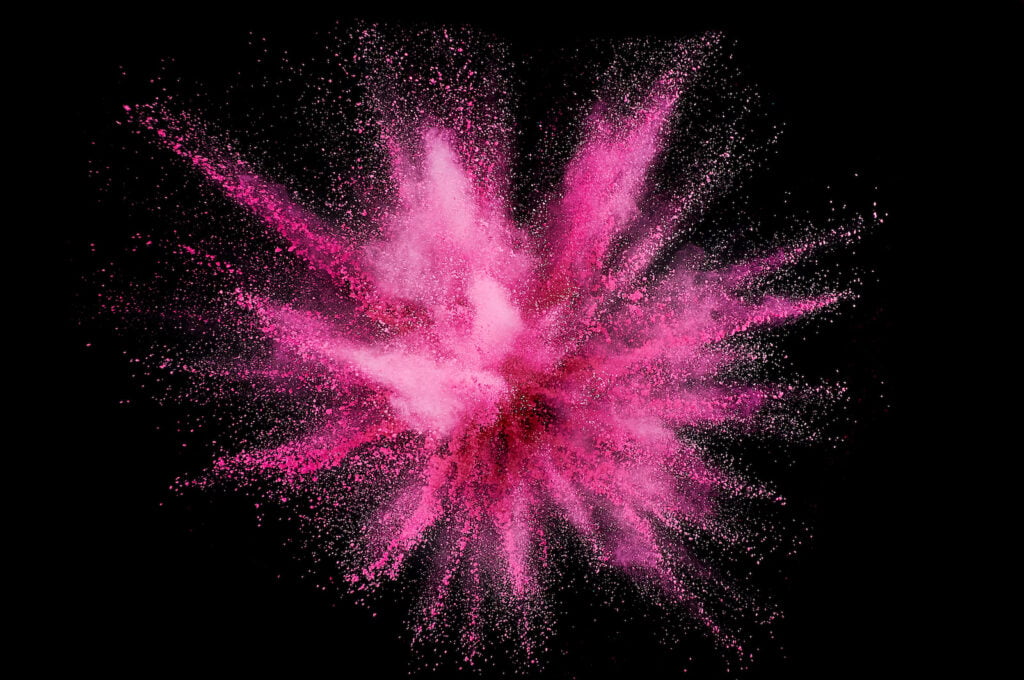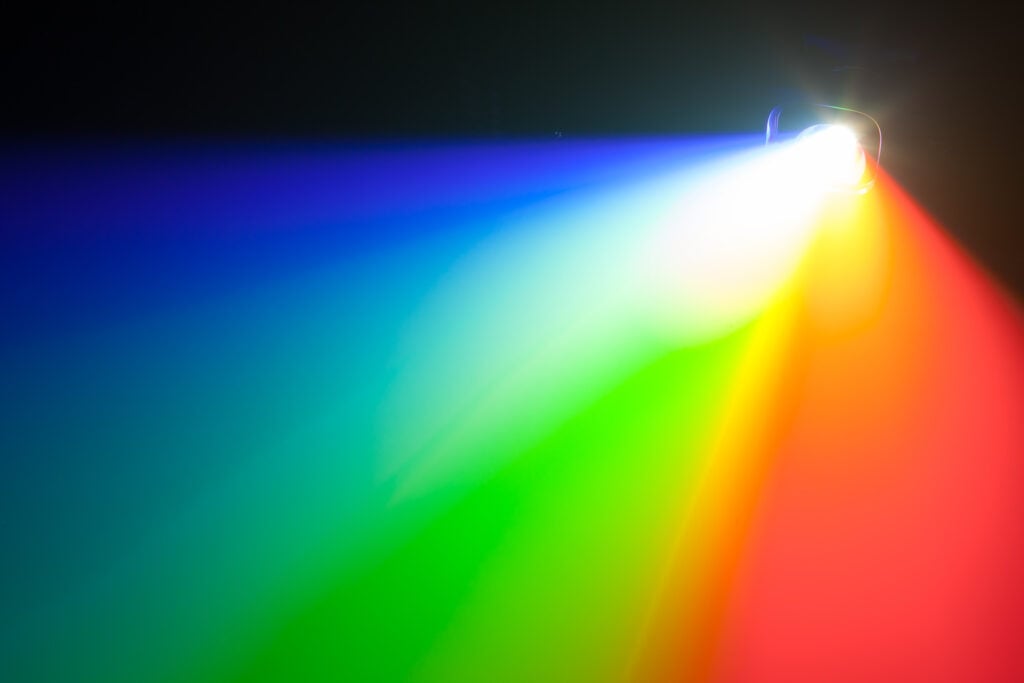
If you look closely at the color wheel, you’ll notice that brown and pink aren’t on it. Yet, they can be made using other colors, so you can still mix them together.
So, what happens if you mix pink and brown together? Is this mixture possible in every color model? Let’s take a look at the results you might get if you try to combine brown and pink.
What Color Do Brown and Pink Make in Paint?
Most combinations of pink and brown paint will give you dark pink. Depending on the type of brown you use, the result could also have purple or red tints to it. Some describe this mixture as deep magenta. Unlike most brown mixtures, the result is elegant instead of murky.
Understanding the RYB Color Model

The RYB color model is the color wheel that most people learn about in early art classes. It’s a form of subtractive color mixing, which means wavelengths are removed when colors are mixed together. It’s used for all types of physical art mediums, like paints and pastels.
Even though pink and brown aren’t main colors on the color model, they still exist. Pink is a tint of red while brown is a combination of the three primary colors. On this color model, the primary colors are red, yellow, and blue. Combinations of those colors can combine to create the secondary colors, which are green, purple, and orange.
Making Colors Lighter or Darker
Whenever you create a new color, there’s a chance that it might not turn out as expected. You can adjust the color’s appearance by making it lighter or darker using other paint colors. Here are some ways to do that.
Mixing Tints
Tints are defined as colors that have white mixed with them, which makes them lighter. Since the result of pink and brown is already very dark, you’ll need to add a lot of white to make a significant change. Starting with a lighter shade of brown could also make the end result lighter.
Mixing Shades
Shades are the opposite of tints because they’re colors that are mixed with black, which makes them darker. A little black paint can go a long way, so be sure to use it sparingly.
Dark Pink Color Meaning

Most types of pinks share the same meanings. Dark pink is specifically a symbol of strong emotions and passion. Pink in general represents compassion, love, and playfulness.
The color pink can give off calming, nurturing, and comforting effects. Some of its positive meanings are kindness, warmth, and intuition. Yet, some people see it as timid, immature, and unconfident. The exact meaning will vary based on the type of pink used, along with the context.
Can You Make Brown and Pink Paint?
If you run out of pink and brown paint, you can easily make more. Pink is a red tint, so it’s a mix of red and white. You can adjust the amount of white you use to make the pink look lighter or darker.
Brown can be a little trickier, but there are lots of ways to create it. The most common way to make brown paint is by mixing red, yellow, and blue together. You’ll also get brown if you mix complementary colors, such as red and green or blue and orange. It’s easier to buy more pink and brown paint, but mixing the colors yourself can help you better understand the RYB color model.
What Color Do Brown and Pink Make in Lights?

Unfortunately, you can’t mix brown and pink together in lights because brown light doesn’t exist. Colored lights can be mixed through the RGB color model, which is used for lights and digital displays, but there’s no brown in RGB. On that color model, the primary colors are red, green, and blue, and they all combine to make white.
This concept might be confusing because we can still see brown objects, even when displayed on a screen. Yet, there’s no way for a light to shine the color brown. Our eyes and brain have to work together to help us perceive this color.
Why Can Lights Not Be Brown?
When you look at neon lights as you drive down the road, you might notice that none of them use brown. Any lights that seem similar to brown are really just dark orange. Brown lights don’t exist naturally because there’s no brown on the visible light spectrum or the RGB color model.
However, there are other colors we can see that aren’t on the visible light spectrum, such as pink or black. That’s because when our eyes perceive colors, they also rely on our brains to provide context. So, if we see a brown light, it’s really just dark orange that our brains are perceiving as brown.
For example, the objects that exist near a color can make them appear different to our brains. Brown is much easier to see if the colors surrounding it are brighter than it. So, brown on a white background will look brown to us, but a black background might make it orange. That’s how we can see brown on digital displays even though brown light is usually just dark orange.
Colored lights are mixed by being layered on top of each other or by combining red, green, and blue at different brightnesses. Since there’s no way to have a brown light or create it using the primary colors, you cannot mix any colors with brown.
How Do Our Eyes Perceive Color?

Even though our eyes work with our brains to help us understand colors, our eyes still do a lot of work on their own. All colors on the visible light spectrum correspond with different wavelengths. On one end of the spectrum, violet is represented with short, frequent wavelengths. Then, red is the opposite on the other end of the spectrum because it has long, stretched-out wavelengths instead.
When light shines on an item, some wavelengths get absorbed into that object while others reflect off it. So, if we look at a ripe banana, yellow will be the only color that reflects off it, while colors like red, green, and blue will get absorbed into it. Thus, the banana will appear yellow to our eyes.
Our eyes use photosensors to interpret these colors. Cone cells are what our eyes use to perceive colors in bright lights, and they’re located in the middle of the retina. Rod cells are more sensitive, so they can help your eyes see colors in dim light. All parts of your eyes work together to help you see the many colors around you.
Does Brown Exist in CMYK?
CMYK is most commonly used for mixing ink colors during printing. It’s often mistaken for being similar to RGB because it uses cyan, magenta, and yellow as the primary colors and red, green, and blue as the secondary colors, which is the opposite of RGB. Yet, this color model is very different because brown exists in it.
All the primary colors in RGB can mix to create white. Yet, when the primary colors mix in CMYK, they make black because it’s a type of subtractive mixing instead of additive like RGB. To create brown in CMYK, you can mix black, red, and yellow, but there are several other methods too. If you mix brown and pink ink, you’ll get dark pink, just like you would in RYB.
Designing with Pink and Brown

Despite being two very different colors, pink and brown work well together. Pink is a bright, vibrant color, so pairing it with a neutral color like brown helps tone it down. That’s why they often work well together in room designs.
Pink and brown look great with other neutral colors or pastel colors. For example, white, blue, green, and gray are some colors that you might see used with both of them. Designing with pink and brown usually gives off calming vibes.
You don’t have to use pink and brown together. Both have a wide range of colors that go well with them. Brown is a neutral color, so it goes well with most colors. The most common colors to pair with brown are white, blue, mint green, gold, red, and turquoise. Some colors that go well with pink are blue, green, gray, yellow, and orange. So, pink and brown are versatile whether they’re together or individual.
Mixing with the Color Brown Can Be Tricky
Brown is a common color, especially when it comes to interior designs. However, mixing with it isn’t a piece of cake. In RYB, brown can make other colors murky if not used carefully. Yet, on the RGB color model, brown doesn’t even exist. So, it can be confusing to artists who are new to color mixing.
Even so, color mixing is a great way to learn about color theory. Testing out different combinations of paints or lights can help you better understand how to design with them. So, don’t be afraid to get creative and mix with some unlikely combinations.



